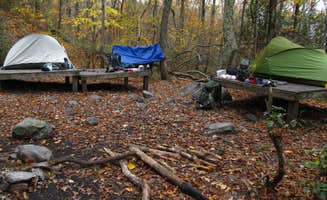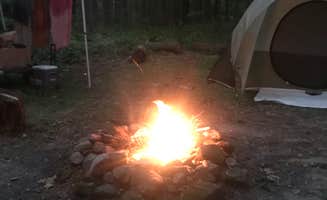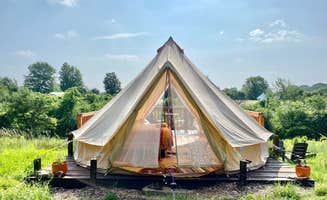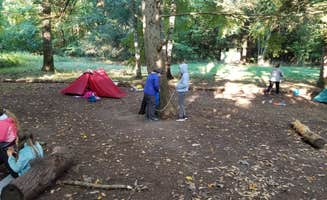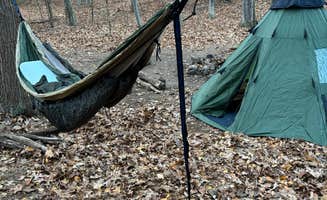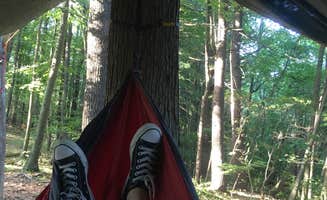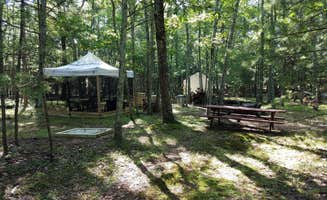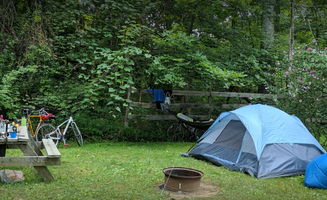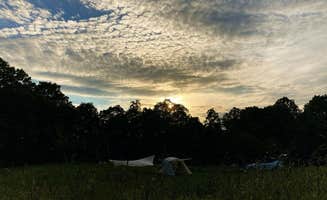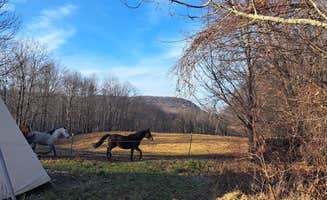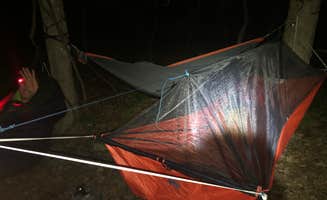Tent camping near Taconic, Connecticut offers backcountry experiences at elevations ranging from 1,000 to 2,200 feet across the tri-state region where Connecticut, Massachusetts, and New York converge. Forested campsites typically receive 45-50 inches of annual rainfall, creating lush surroundings but requiring proper rain gear during spring and fall months. Most primitive sites close during winter (December-March) due to snowfall and difficult access conditions.
What to do
Hiking to mountain summits: Bear Mountain, the highest peak in Connecticut at 2,316 feet, is accessible from Brassie Brook Shelter. "After hitting the bear mountain summit (right at the big sign), we turned back to spend the night at Brassie Brook," reports Nora S., who recommends the view as "incredible."
Rock climbing at the Gunks: World-class climbing opportunities await at Samuel F. Pryor III Shawangunk Gateway Campground. According to Jackie B., "Located really close to the Gunks for climbing and also some great hikes around the area." Climbers should note that many travel from around the world to access these routes.
Overnight backpacking trips: Connect multiple campsites by hiking sections of the Appalachian Trail. Tina D. describes her experience at Laurel Ridge: "This was one of my favorite all time hiking/camping experiences. My friends and I were doing this as an overnight hike. We actually started this hike in by Race Brook Falls area... The views once you get up there are nothing short of stunning."
What campers like
Solitude in accessible wilderness: Campers appreciate the balance between remoteness and accessibility at Alander Trail Camground. Kay D. notes, "It's completely free and it usually isn't too busy since most people don't like having to carry all their stuff in that far. You will be in the heart of the forest/woods so definitely make sure to be prepared."
Well-maintained facilities: Many primitive sites are surprisingly well-kept. At Brassie Brook Shelter, Nora S. found "a small lean-to as well as about 4/5 campsites located all around. Firepits, toilets but that's about it." Similarly, at Alander Trail Campground, Liz P. was impressed that "the area was emmaculate and not one piece of trash on the ground anywhere! The outhouse was even clean!"
Wildlife encounters: The region offers chances to observe local wildlife. Kay D. mentions at Alander Trail Camground: "We had some scares with coyotes and bears in the past but never anything crazy." Proper food storage is essential, with Kay noting that sites typically include "a bear box you would be sharing with other campers nearby."
What you should know
Hiking distance requirements: Most primitive sites require significant hiking. At Onion Mountain Park, Ricky H. clarifies, "Other posts claim you can park right the site, but you can not. It's up the yellow or blue trail depending on which one you take. However, it's not a long walk to the parking area from the campsite."
Pack weight considerations: Be prepared for the physical demands of reaching campsites. Kay D. emphasizes at Alander Trail Camground, "You have to park at the entrance and hike in about 1.5-2 miles with everything on your back to get to the spots."
Weather preparedness: Mountain weather can change rapidly. Tina D. recounts at Brassie Brook Shelter, "Our trip was sadly cut short because we were freezing and it was raining a lot LOL but hey it's part of the experience. The fall views made it worth it. We did have some sun spots at least throughout the trip."
Tips for camping with families
Begin with shorter hikes: For families new to backcountry camping, start with more accessible sites. Marshall S. recommends Onion Mountain Park: "My BSA troop has been going here for years to help new scouts learn to camp. It is a very casual site and good for your first trip, you are close to your car and the road in case you need it."
Consider alternative accommodations: Unique lodging options exist near traditional tent camping areas. At Chester Railway Station, Esther L. describes, "It is a really fun place to spend a night, especially for a train enthusiast. The caboose is stationed on a big grassy field, near a real railroad. It sleeps 4 and you can set up tents outside too."
Pack light but thoroughly: For sites requiring hiking, prioritize essentials. Nora S. advises for Onion Mountain Park, "We ended up finding a very primitive spot off the blue trail (on top of the mountain), where we settled down for the night. The spot is not very big so make sure to bring a smaller tent."
Tips from RVers
Limited options for large vehicles: The Taconic region has few RV-friendly campgrounds. At Windmill Hill - Connecticut White Memorial Campground, Sara R. notes the primitive nature: "I booked site 5 for the week. Great experience! Quiet woods atmosphere with trail's. Wonderful place to camp." This campground offers tent sites with some basic amenities but no hookups for RVs.
Consider base camp strategy: RV campers may need to establish base camps at more developed campgrounds and take day trips to hiking areas. Most primitive sites in the region cannot accommodate recreational vehicles of any size due to narrow access roads and limited parking.
Check seasonal availability: Many campgrounds in the region close during winter months. Call ahead to confirm operating dates, as websites may list general seasons rather than specific opening and closing dates that can vary based on weather conditions.


